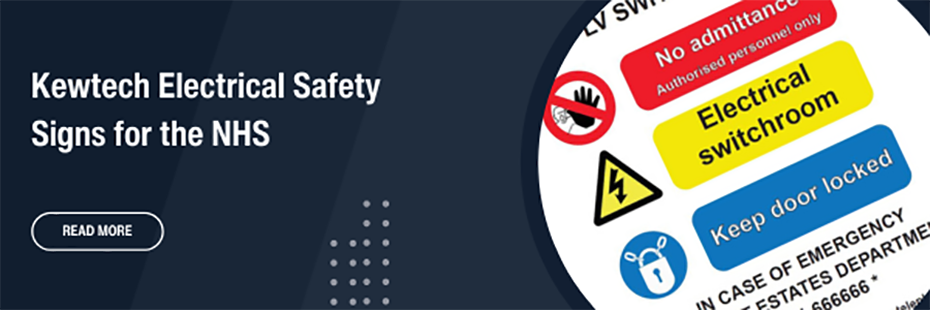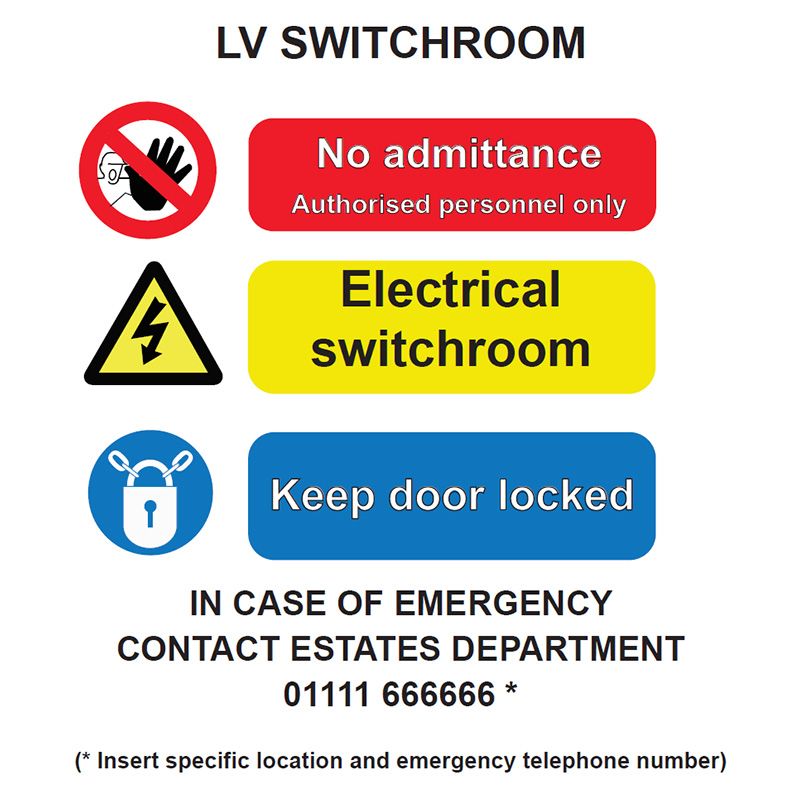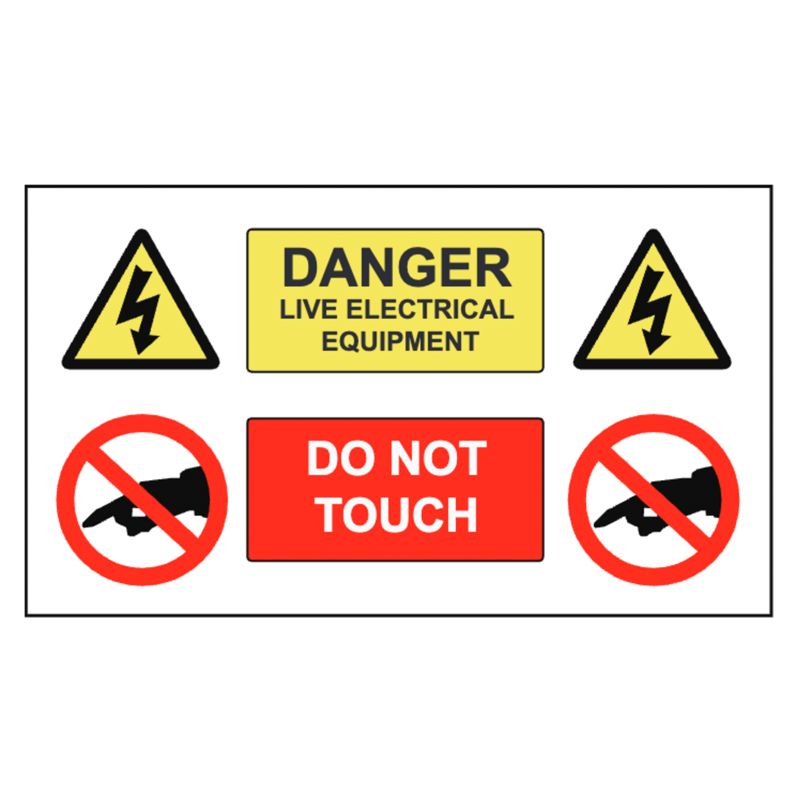
In the UK, electrocution accounts for 0.54 deaths in every 100,000 people per year. Generated electricity causes more than 90% of these deaths. Most low-voltage electrocutions occur in the home or workplace while a majority of high-voltage deaths happen at work.[1] Similarly, 1322 electricity-related workplace deaths befell the USA between 2011 and 2022. According to the Occupational Safety and Health Administration (OSHA), 70% of these fatalities took place in non-electrically related occupations.[2] Evidently, the risks of even low-voltage electric shocks are too great to ignore, especially as they are not confined to electricity-centred professions. That is why the NHS has devised a comprehensive safety handbook. Chapter 5 of the handbook highlights the importance of electricity safety signs and posters. Read on to understand the critical role these signs have in mitigating electric shocks, burns, and fatalities in the National Health Service.
Quick Links
- NHS Electrical Safety Procedures: Electricity Safety Signs
- Kewtech Electrical Safety Poster & Signs
- Further Information
NHS Electrical Safety Procedures: Electricity Safety Signs
NHS England stresses the importance of electricity safety signs and posters in its Health Technical Memorandum 06-02: Electrical Safety Handbook. Within this handbook, NHS England details clear regulations on the specifications and display of electrical safety posters and signs.[3]
Click for the NHS England Health Technical Memorandum 06-02: Electrical Safety Handbook
Electrical Safety Poster
NHS England specifies that every switchroom should prominently display an electrical safety poster for each of the following:
- Electric shock treatment
- Low voltage system schematic
- Electricity at Work Regulations
Additionally, departments/ switchrooms may display posters with other relevant health and safety information.
Electrical Safety Signs
According to NHS England, electrical safety signs should be made from laminated plastic or a similar non-metallic weather-resistant material and must be compliant with BS EN ISO 7010.
Displaying Permanent Electrical Safety Signs
Staff should use non-corrosive materials to fix permanent safety signs. Personnel must never use adhesives to secure safety signs. Appropriate safety signs must be prominently displayed in the following areas:
- LV switchrooms containing LV switchgear or distribution equipment
- Where there are dangers and risks associated with auxiliary equipment such as generators and PV installations
- Switchrooms with a fire suppression system
- Accommodation where low voltage is present
Displaying Temporary Electrical Safety Signs
Only an Authorised Person may fix and remove temporary safety signs. These signs must be suspended from non-conducting cords and provide the following:
- Two 5mm diameter holes for a suspension cord
- These Ø5mm holes should be 10mm from the top edge of the sign
- For signs that are 150mm wide, these holes must be 30mm from the end
- For 200mm-wide signs, these holes must be 50mm from the end
Temporary Caution Signs
Before work starts; during work or testing; and prior to the issue of any permit-to-work, electrical caution signs must be clearly displayed and securely fixed at all points of isolation.
Temporary Danger Signs
Like caution signs, temporary danger signs must be prominently displayed and securely fixed at all points of isolation before work starts; during any work or testing; and prior to the issue of any permit-to-work. Electrical danger signs must be visible from every angle of approach to the low voltage enclosure and should be obviously displayed in the following additional locations:
- Live equipment adjacent to the equipment being worked on or tested
- Equipment that is in or adjacent to limitation-of-access areas
- When work is being conducted on a multi-cubicle switchboard, danger signs should be placed on adjacent cubicles and compartments as well as on the front and rear of the board
Read NHS England’s Full Safety Guidance Here
Kewtech Electrical Safety Poster & Signs
Kewtech understands the importance of displaying information posters and warning signs, especially within an institution as revered as the NHS. That's why Kewtech has designed a selection of signs specifically for the National Health Service.
Kewtech NHS Compliant Electrical Safety Sign - CAUTION 'Do Not Switch On'
- Prevent accidental activation of electrical equipment
- Dimensions: 200 x 100 x 1.5mm
- Made from white plastic
- NHS compliant
Kewtech NHS Compliant Electrical Switchroom Safety Sign
- For use in switchrooms containing LV distribution equipment
- Dimensions: 200 x 100 x 1.5mm
- Made from white plastic
- NHS compliant
Kewtech NHS Compliant Electrical Safety Sign - DANGER 'Do Not Touch'
- Prevent accidental contact with live electrical equipment
- Dimensions: 200 x 100 x 1.5mm
- Made from white plastic
- NHS compliant
View All Kewtech Electric Safety Signs
Further Information
For additional help or advice regarding electrical safety posters or signs, including the aforementioned Kewtech products, please contact our Sales team on 01642 931 329 or via our online form.
Alternatively, please browse Kewtech's NHS-compliant signs or our complete collection of PPE below.
Shop Kewtech NHS-Compliant Signs
[1] NHS Scotland, Departmental Guidelines: Electrocution, last accessed 14 August 2024.
[2] Electrical Safety Foundation, Workplace Fatalities & Injuries, last accessed 14 August 2024.
[3] All information about NHS England’s regulation was gathered from the following source:
- NHS England, “5 Display of posters and safety signs”, in Health Technical Memorandum 06-02: Electrical safety handbook, 38-41, last accessed 14 August 2024.





